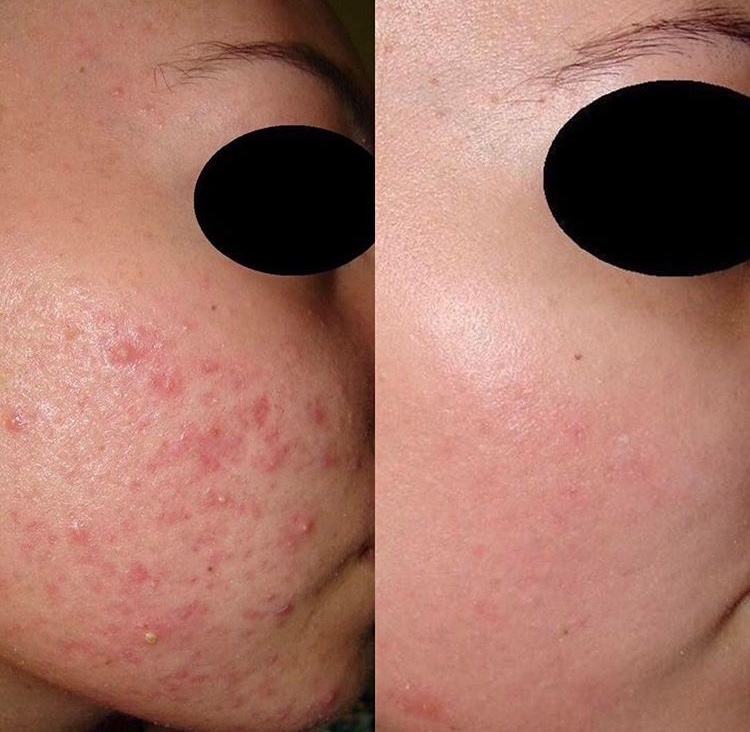
*Disclaimer: Results vary from patient to patient. Results are not guaranteed.
Human skin can experience a lot of wear and tear over the years, especially on the face. The environment, sun, dirt, cosmetics, and facial expressions all contribute to the damage that becomes visible on the outer layer. The result is a dull, unhealthy appearance in need of skin rejuvenation.
Chemical peels can help patients rejuvenate their appearance with fresh, smooth skin. At venus center , we offer various custom chemical peels to treat a wide range of skin issues. For expert skin care and personalized treatment from our board-certified dermatologists
A chemical peel treatment typically involves the application of a solution to the skin that will remove dead skin cells, which allows the next layer of skin to develop and replace the old layer. The result is tightened, radiant skin with reduced wrinkles.
Essentially, there are three types of chemical peels, each distinguished by the depth of treatment:
- Superficial chemical peels – do not penetrate below the epidermis, the outermost layer of skin.
- Medium chemical peels – penetrate below the epidermis to the top layer of the dermis, but generally does not go deeper.
- Deep chemical peels – penetrate to the deepest layers of the dermis.
The depth of penetration depends on the type and strength of the solution and the amount of time the solution interacts with the skin.
If you’re considering a chemical peel treatment, but aren’t sure which is suitable for you, talk to ourskilled medical doctor to examine the condition of your skin and overall health.
At Venus Center we can effectively treat a multitude of troublesome skin conditions with a chemical peel:
- Sun spots
- Age spots
- Superficial lines and wrinkles
- Uneven pigmentation
- Shallow acne scars
- Unbalanced skin tone
- Rough skin
Chemical peels are safe and effective enough for nearly any part of the body, though the areas that respond best are the face, neck, and hands. The chest, arms, and legs can also be treated, but the results are not always consistent.
The Process Of A Chemical Peel
Pre-treatment
General preparation for a chemical peel begins about two weeks prior to the procedure:
- Clean the area twice a day
- Apply a hydrating moisturizer or cream 1-2 times per day
- Wear sunscreen every day.
This pre-treatment routine is key. It helps the skin heal more evenly and reduces the risks of infection, unusual skin color changes, and more.
A Simple Process
*Disclaimer: Results vary from patient to patient. Results are not guaranteed.
First, a solvent such as acetone or alcohol is applied to the area of the skin to be treated. Next, the chemical peeling solution is applied, remaining on the skin for the amount of time necessary to get the desired results. Once it is finished, a neutralizing agent is applied. Depending on the type of chemical peel, the treated area may be bandaged, and the patient can go home.
Post-Treatment Care
Ultimately, the degree of skin and facial rejuvenation depends on post-treatment care, regardless of the chemical peel type. General tips to keep in mind include:
Clean the treated area and surrounding skin often
Change the bandages regularly
Moisturize the skin often every day
Avoid sun exposure until peeling stops
After peeling, use sunscreen every day
A superficial chemical peel requires no downtime or recovery. During post-treatment, patients should experience no more than slight discomfort and the skin could turn pink. Expect only a minimal amount of peeling. A series of 2-3 peels spaced 2-4 weeks apart will gently separate the skin cells in the damaged outer layer so they painlessly slough off for fresh smooth skin beneath.
A medium chemical peel often results in 2-3 days downtime and a longer overall recovery as the treated skin sloughs off and the new skin grows and heals. After a week, the skin should be healed enough for makeup. Patients can expect redness and swelling post-treatment, although usually not much discomfort. After 2-3 days, the skin goes reddish-brown, hardens, and then flakes and peels for several more days.
A deep chemical peel can require 1-2 weeks of downtime and recovery. It takes about two weeks for the skin to grow back and it will be very red for about a month. Post-treatment care is important after a deep peel because of the increased risk of infection.
Although post chemical peel treatment redness is an unwanted side effect, it does show that healing is taking place. Unintended skin discoloration can also occur—lightening is more common after a deep peel (hypopigmentation) while darkening is more likely after a superficial peel (hyperpigmentation)
A chemical peel treatment can be customized according to each patient’s needs.our doctor will to determine the right type of solution, the appropriate strength, and the right amount of treatment time to achieve the following results:
- Smooth skin
- Fewer fine lines and wrinkles
- Restored skin tone balance
- Reduced appearance of superficial acne or acne scars
- Resurfaced skin that is smooth to the touch
- Overall skin rejuvenation
At venus center, we typically combine a chemical peel with one or more aesthetic treatments to enhance your results or treat particularly troublesome conditions.
One such combination treatment includes a microdermabrasion device specially designed to correct fine lines and wrinkles, acne scarring, and lax skin.
Chemical peels are not for everyone. This treatment is not recommended for patients who are:
- Pregnant or nursing
- Have an active skin disease, such as rosacea, eczema, psoriasis, or dermatitis
- Have broken or sunburned skin
- Have used a prescription skin care product, such as Retin-A, Renova or other product with ascorbic acids, in the past two days
The results may not be as consistent for patients who have:
- A dark complexion
- A pale, freckled complexion (with red hair)
- Abnormal pigmentation in the skin
- A history of regular cold sores

